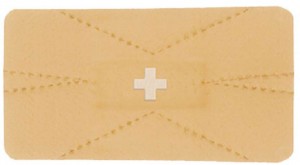Quality management standards seem rare to come across when you look at the health system in Iowa. Specifically their hospitals. Iowa Lutheran is the first hospital in Iowa to achieve their ISO certification.
ISO 9000 standards are well known to American manufacturers as they have used ISO for quality assurance in their products. ISO gives suppliers a peace of mind that what they are receiving, follow international standards in their quality management. That means that a company’s upper management has set up a processes for all steps of their respective system. Six procedures are required by ISO; control of documents, control of quality records, internal audit, nonconforming control, corrective action, preventive action. The organization’s mission is to set standards for goods and services, ensuring efficient processes.
- Iowa Lutheran Hospital
When you look at healthcare and hospitals, quality care is necessary and could be the difference between life and death. Should it be troubling that this is the first hospital in Iowa that follows ISO standards? Not necessarily. Prior to seeking ISO 9000-certification hospitals were granted certification through the Joint Commission on Accreditation of Hospitals (JCAHO). The largest and oldest accrediting organization for healthcare, they set standards for the quality and safety of health care provided to patients.
What could be the implications of switching from a healthcare specific accreditation organization to an international standard organization? Is ISO 9000 a better quality tool overall for healthcare?
According to the article, “Iowa Lutheran has implemented a quality management system that includes review of acute medical, surgical, critical care , rehabilitative, obstetrical, emergency care, laboratory and radiology services.” It is obvious to see that the hospital is striving for excellence in healthcare and providing the patients with the best services, as any hospital should. It seems to me that any hospital would have the best possible standards set in place for all their different systems. Not only does ISO set up certain guidelines, but it also allows for collaboration between members for best practices, and this is an international group. Iowa Lutheran specifically attained 9001:2008 ISO certification. It takes a process-oriented approach. The requirement ensures ‘what’ an company must do to meet customer needs and expectations. ‘How’ this is done is left up to the company, or in this case, the hospital. Hospitals are a lucrative business in the way they charge for a doctor to visit a patient, to take and x-ray, virtually everything they do. Insurance companies, healthcare systems and providers, and pharmaceutical companies. There are so many systems, guidelines, and protocols to follow. The four sections that make up ISO 9001:2008 would really benefit a hospital and how it is run. The sections include management responsibility, resource management, product and/or service realization, and measurement, analysis and improvement.
The other metropolitan hospital in Des Moines refuses to change to ISO 9000 standards. How else can ISO 9000 benefit hospitals?


